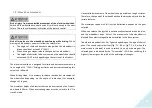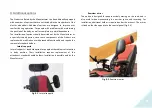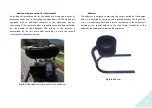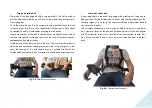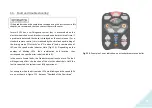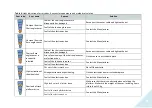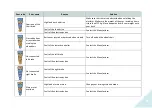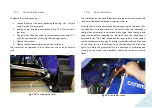
46
8.2.
Movement on wheelchair GTS 4WD
All-wheel drive allows you to climb and descend from obstacles no
more than 8 cm high, both when moving forward and in reverse.
Before overcoming obstacles, reduce the speed to prevent the Product
from overturning.
ALL-WHEEL DRIVE
The main driving modes of the wheelchair GTS 4WD are all-wheel drive.
In this mode, all four wheels are driven. Such a design of the drive
system allows you to move comfortably both on a flat surface and to
overcome sand, snow and even mud.
In this mode, the wheelchair is capable of making a "tank turn". It should
be noted that the maneuvering on all four driving wheels create a
greater load on the engine. If possible, avoid maneuvering on surfaces
with high friction, such as asphalt. This will reduce the wear on the tires
and battery consumption.
REAR DRIVE
A special mode in which additional self-turning wheels are extended at
the front of the wheelchair. In this case, the front wheels are detached
from the surface, but continue to rotate while driving.
In front-wheel drive mode, the wheelchair has the following advantages:
Speed - the wheelchair does not need to slow down to maneuver,
which has a positive effect on linear speed and handling in movement.
Maneuverability - the small distance between the drive wheels and the
additional wheels allows you to make difficult maneuvers and even full
turns in the narrow corridors of houses and apartments.
Economical - maneuvering in the wheelchair with additional wheels
does not require additional load to overcome the friction of tires on
various types of surfaces during a turn.
Despite the advantages of rear-wheel drive, this mode has a significant
lack:
Passability - the small diameter of the additional wheels does not allow
them to overcome obstacles with a height of more than 1 cm. You
should carefully choose the way of movement and limit the use of this
mode to places with high-quality coverage, for example, asphalt,
shopping centers, as well as apartments.







